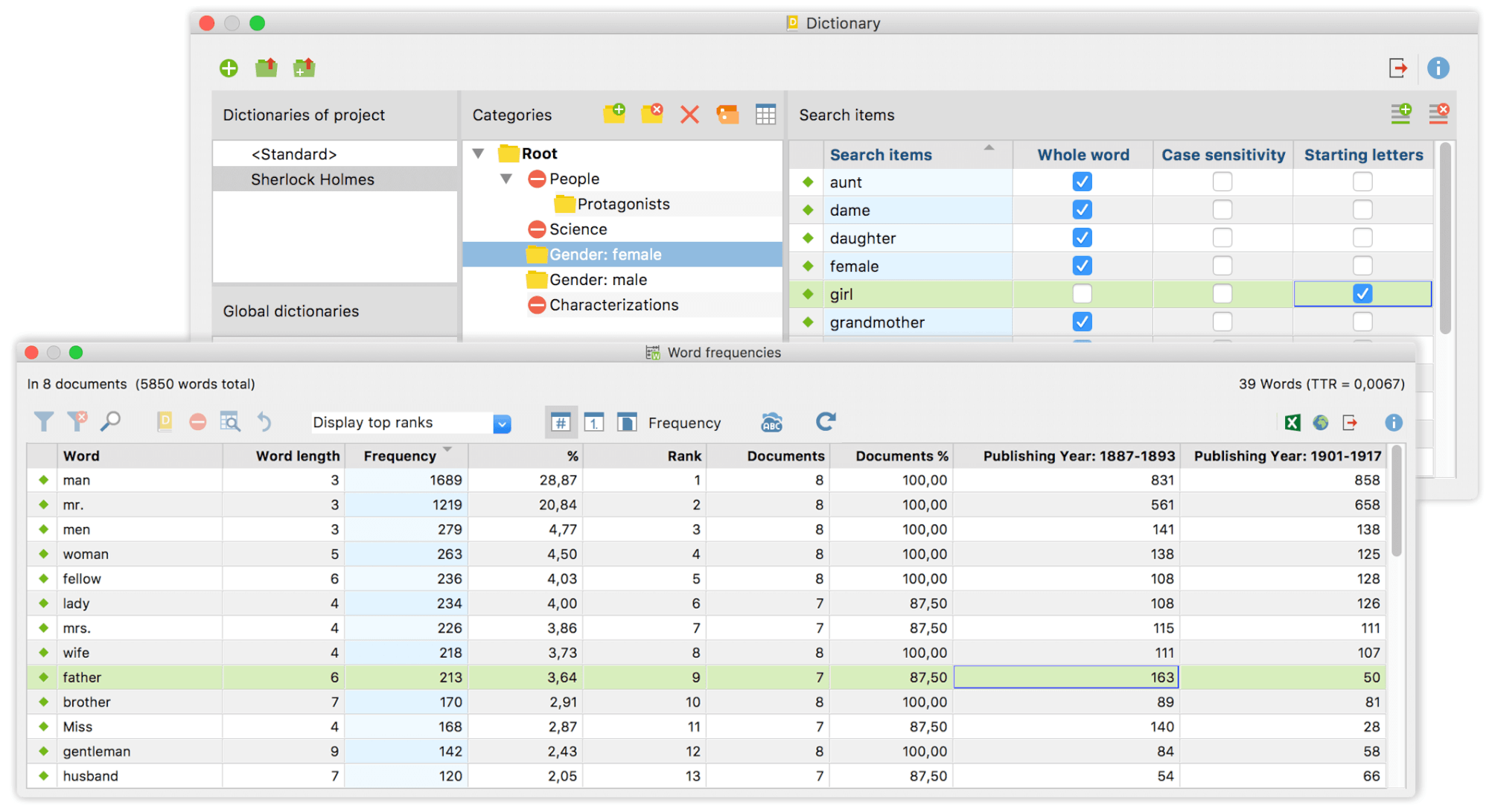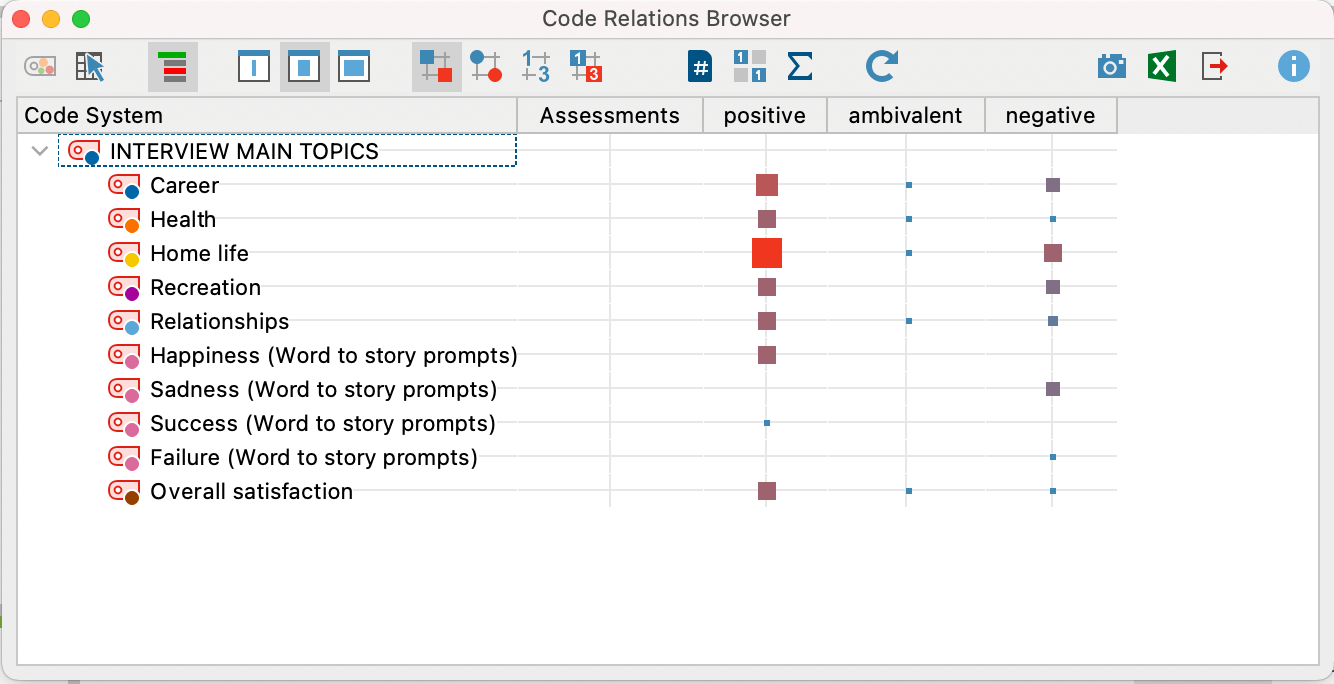

- Add code to dictionary maxqda software#
- Add code to dictionary maxqda Offline#
- Add code to dictionary maxqda download#
- Add code to dictionary maxqda windows#
You only need to connect to the Internet at the beginning and end of a project cycle to download and upload files.
Add code to dictionary maxqda Offline#
Work offline & share online: Work on local project copies simultaneously, even when you’re offline.
Add code to dictionary maxqda software#
Let your software handle team communication and file management so you can focus on your analysis. Share files with your team via a secure cloud space, invite colleagues to contribute their work, analyze offline, and decide when and what to import from your team members.Ĭollaboration without the hassle: Distribute projects and external documents, view your team’s latest activity, and get notified of new imports or downloads within MAXQDA. The new Teamwork Cloud integrates collaboration even deeper into your workflow! It has always been easy to collaborate as a team in MAXQDA. If FSO.Analyze as a team Paraphrase media files & categorize paraphrases Secure & seamless cloud collaboration If FSO.FolderExists(SpecialPath & "VBAProjectFiles") = False Then SpecialPath = WshShell.SpecialFolders("MyDocuments") Set FSO = CreateObject("scripting.filesystemobject")

Set WshShell = CreateObject("WScript.Shell") ''' cmpComponentįunction FolderWithVBAProjectFiles() As String ''' remove it from the project if you want ''' This is a worksheet or workbook object.ĬmpComponent.Export szExportPath & szFileName ''' Concatenate the correct filename for export. SzExportPath = FolderWithVBAProjectFiles & "\"įor Each cmpComponent In Set wkbSource = Application.Workbooks(szSourceWorkbook) ''' or delete all files in the folder if it exist. ''' The code below create this folder if it not exist ''' VBAProjectFiles in the Documents folder. ''' The code modules will be exported in a folder named. (objFSO.GetExtensionName(objFile.Name) = "bas") Then (objFSO.GetExtensionName(objFile.Name) = "frm") Or _ If (objFSO.GetExtensionName(objFile.Name) = "cls") Or _ ''' Import all the code modules in the specified pathįor Each objFile In objFSO.GetFolder(szImportPath).Files 'Delete all modules/Userforms from the ActiveWorkbook If objFSO.GetFolder(szImportPath).Files.Count = 0 Then Set objFSO = New Scripting.FileSystemObject SzImportPath = FolderWithVBAProjectFiles & "\" ''' NOTE: Path where the code modules are located. MsgBox "The VBA in this workbook is protected," & _

Set wkbTarget = Application.Workbooks(szTargetWorkbook) ''' NOTE: This workbook must be open in Excel. If FolderWithVBAProjectFiles = "Error" Then "Not possible to import in this workbook " MsgBox "Select another destination workbook" & _ If ActiveWorkbook.Name = ThisWorkbook.Name Then Rubberduck's add/remove references dialog makes it much easier:ĭisclaimer: I manage the Rubberduck open-source project. The VBE's "import" file browse dialog is blocking multiple selections for some reason Rubberduck fixes that by allowing multiple selections in its own "import" file browse dialog (off its Code Explorer toolwindow), and its "Export Active Project" tool makes it trivial to export an entire project's source code into a given folder like, say, a local git repository.Īs for project references, no code can do that automatically without parsing some metadata that would have to be included somewhere in the module itself.
Add code to dictionary maxqda windows#
Then when you start a new VBA project, drag the files from the Windows Explorer and drop them onto the VBE's Project Explorer toolwindow - done. It's a little-known VBE feature, that the Project Explorer supports drag-and-drop. Simply save the commonly-used files in one specific folder that only contains these files. You don't need any code or add-in for mass-importing.


 0 kommentar(er)
0 kommentar(er)
